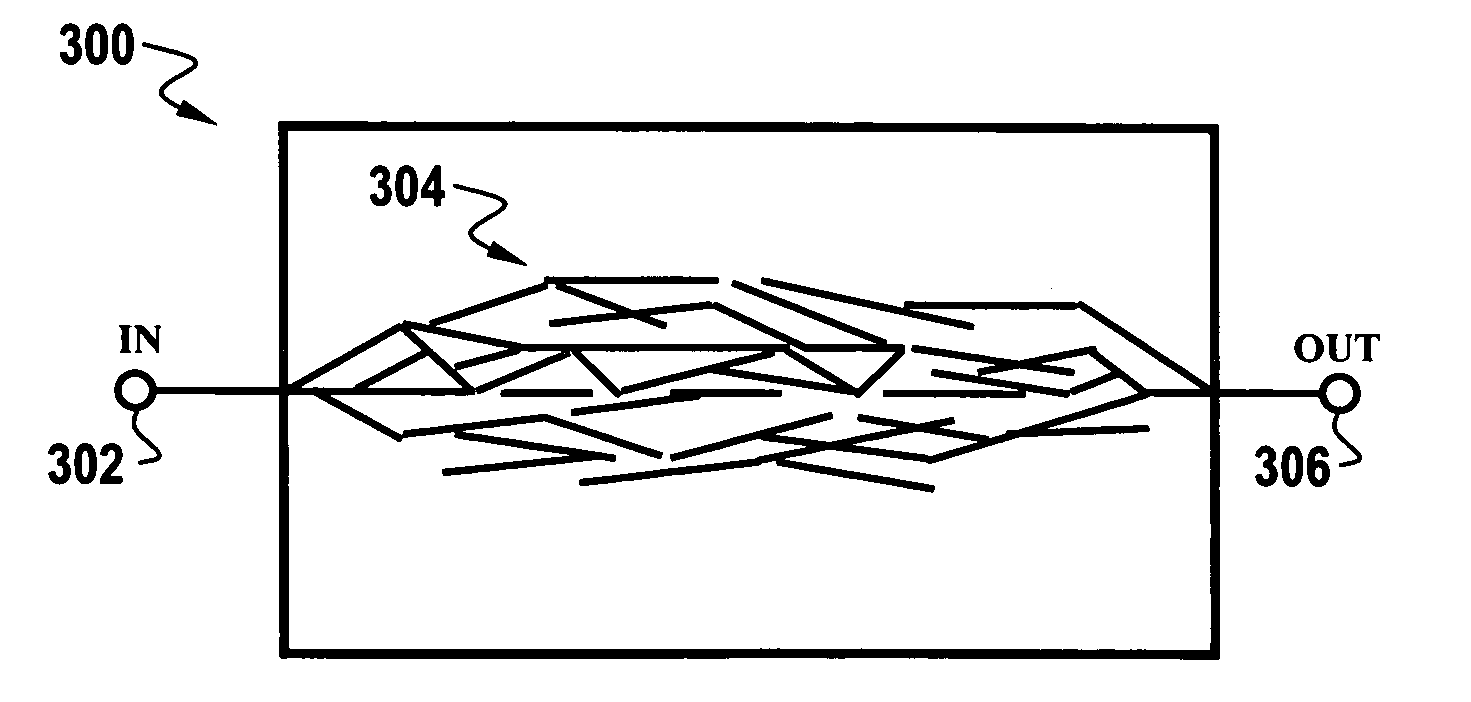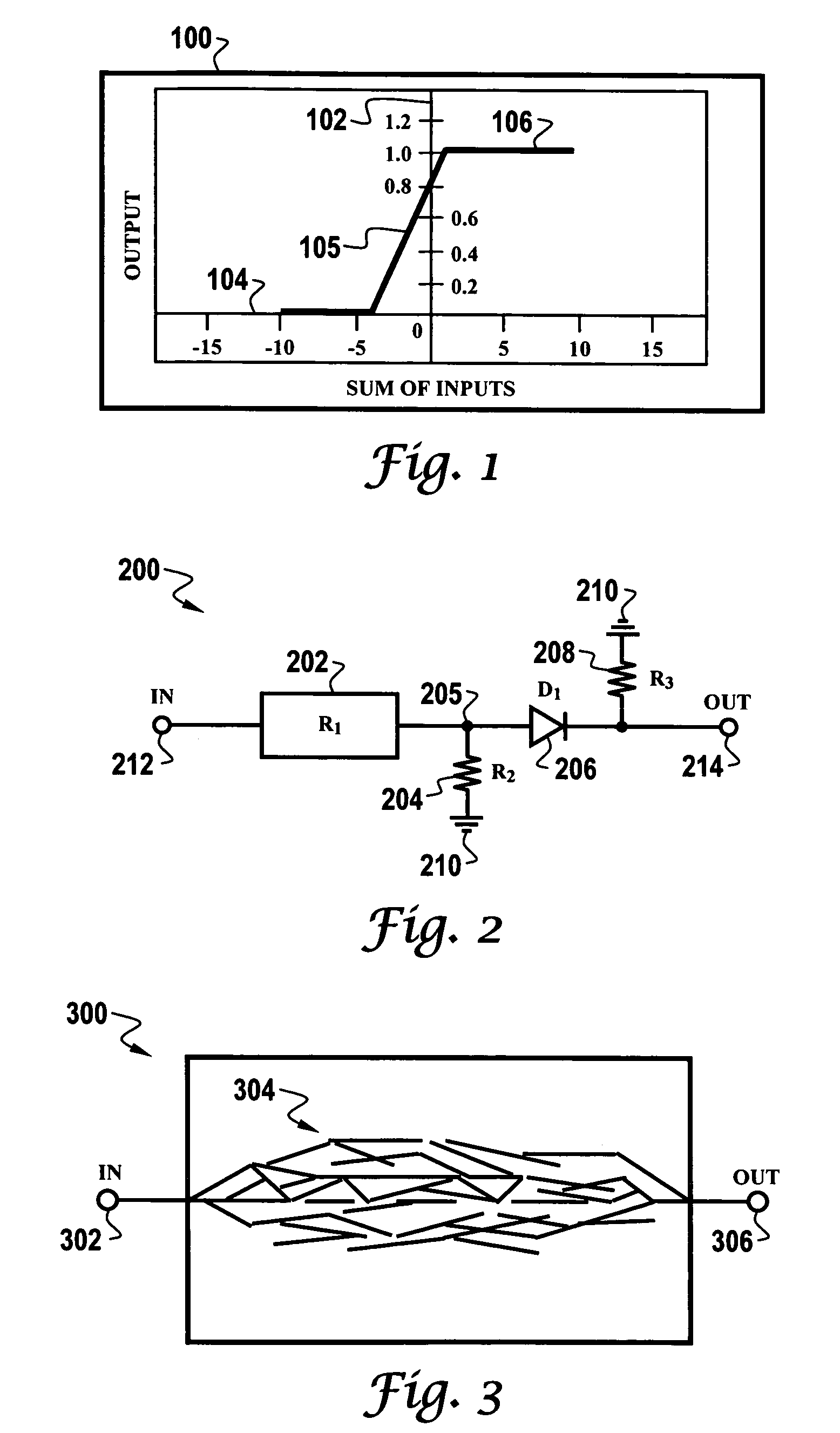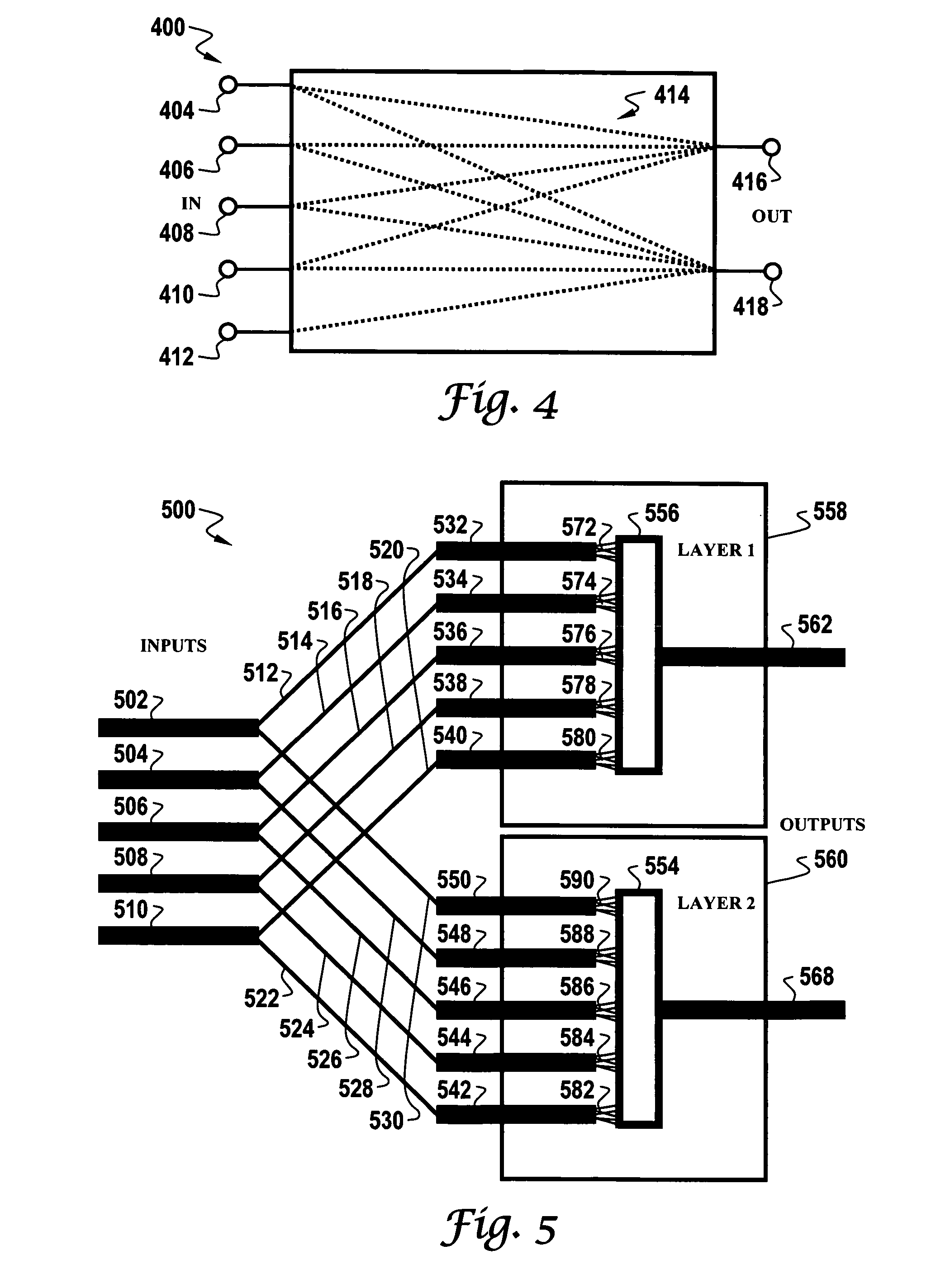Nanotechnology neural network methods and systems
a neural network and neural network technology, applied in the field of molecular technology, can solve the problems of no efficient algorithm, conventional computers unsuitable for many real-time problems, and proved extremely difficul
- Summary
- Abstract
- Description
- Claims
- Application Information
AI Technical Summary
Benefits of technology
Problems solved by technology
Method used
Image
Examples
Embodiment Construction
[0075]The particular values and configurations discussed in these non-limiting examples can be varied and are cited merely to illustrate an embodiment of the present invention and are not intended to limit the scope of the invention.
[0076]The physical neural network described and disclosed herein is different from prior art forms of neural networks in that the disclosed physical neural network does not require computer calculations for training, nor is its architecture based on any current neural network hardware device. The physical neural network described herein is generally fast and adaptable, no matter how large such a physical neural network becomes.
[0077]The physical neural network described herein with respect to one or more embodiments can be referred to generically as a Knowm™. The terms “physical neural network” and “Knowm” can thus be utilized interchangeably to refer to the same device, network, or structure. The term “Knowm” can also refer to a semiconductor implementa...
PUM
 Login to View More
Login to View More Abstract
Description
Claims
Application Information
 Login to View More
Login to View More - R&D
- Intellectual Property
- Life Sciences
- Materials
- Tech Scout
- Unparalleled Data Quality
- Higher Quality Content
- 60% Fewer Hallucinations
Browse by: Latest US Patents, China's latest patents, Technical Efficacy Thesaurus, Application Domain, Technology Topic, Popular Technical Reports.
© 2025 PatSnap. All rights reserved.Legal|Privacy policy|Modern Slavery Act Transparency Statement|Sitemap|About US| Contact US: help@patsnap.com



